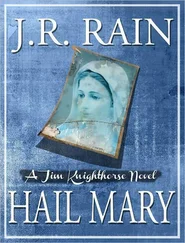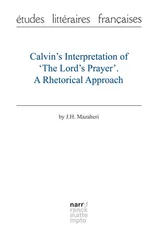Helge Fauskanger - J.R.R. Tolkien’s Lord’s prayer and Hail Mary in Quenya - Syntactical and Etymological Analysis
Здесь есть возможность читать онлайн «Helge Fauskanger - J.R.R. Tolkien’s Lord’s prayer and Hail Mary in Quenya - Syntactical and Etymological Analysis» весь текст электронной книги совершенно бесплатно (целиком полную версию без сокращений). В некоторых случаях можно слушать аудио, скачать через торрент в формате fb2 и присутствует краткое содержание. Жанр: Языкознание, на английском языке. Описание произведения, (предисловие) а так же отзывы посетителей доступны на портале библиотеки ЛибКат.
- Название:J.R.R. Tolkien’s Lord’s prayer and Hail Mary in Quenya: Syntactical and Etymological Analysis
- Автор:
- Жанр:
- Год:неизвестен
- ISBN:нет данных
- Рейтинг книги:5 / 5. Голосов: 1
-
Избранное:Добавить в избранное
- Отзывы:
-
Ваша оценка:
- 100
- 1
- 2
- 3
- 4
- 5
J.R.R. Tolkien’s Lord’s prayer and Hail Mary in Quenya: Syntactical and Etymological Analysis: краткое содержание, описание и аннотация
Предлагаем к чтению аннотацию, описание, краткое содержание или предисловие (зависит от того, что написал сам автор книги «J.R.R. Tolkien’s Lord’s prayer and Hail Mary in Quenya: Syntactical and Etymological Analysis»). Если вы не нашли необходимую информацию о книге — напишите в комментариях, мы постараемся отыскать её.
J.R.R. Tolkien’s Lord’s prayer and Hail Mary in Quenya: Syntactical and Etymological Analysis — читать онлайн бесплатно полную книгу (весь текст) целиком
Ниже представлен текст книги, разбитый по страницам. Система сохранения места последней прочитанной страницы, позволяет с удобством читать онлайн бесплатно книгу «J.R.R. Tolkien’s Lord’s prayer and Hail Mary in Quenya: Syntactical and Etymological Analysis», без необходимости каждый раз заново искать на чём Вы остановились. Поставьте закладку, и сможете в любой момент перейти на страницу, на которой закончили чтение.
Интервал:
Закладка:
quanta, adjective full . This word is attested at all stages of Tolkien’s long evolution of Quenya; it occurs both in the Qenya Lexicon of 1915 (QL:78 s.v. qntn or qata), in the Etymologies of the mid-thirties (LR:366 s.v. kwat-, which was an added entry) and in such a post-LotR source as the essay Quendi and Eldar of ca. 1960 (in the phrase quanta sarme"full writing", VT39:8). In the two first sources, the spelling used is of course qanta. The stem kwat- from which this adjective was derived in the Etymologies was not further explained or even defined there. However, in Quendi and Eldar Tolkien shed more light on this root (WJ:392). He "theorized" that it had originally occurred in a simpler form kwa: "This stem evidently referred to completion . As such it survives as an element in many of the Eldarin words for whole, total, all , etc. But it also appears in the form *kwan, and cannot well be separated from the verb stem *kwata, Q[uenya] quat - fill ." The adjective quanta full "cannot well be separated" either, and this verbal stem kwata, extension of kwa, is clearly the same stem as kwat- in the Etymologies (another case of slightly inconsistent representation of stems; see Eruo). If kwat(a) is primarily a verbal stem fill , it could have a primitive past participle * kwatnâ filled (- nâbeing a primitive past participle ending; see aistana). If quanta full is to be referred to * kwatnâ filled , this old past participle may then have developed into an adjective. For a probable parallel case, cf. Quenya melda beloved , dear ; the glosses make it clear that this is to be taken as an adjective. However, the primitive form Tolkien probably meant to be * melnâ, which would simply be the past participle loved , formed from the stem mel- love (as friend) (LR:372). * Kwatnâmay have metathesized to * kwantâat an early stage; cf. another example of the ending - nâbeing added to a stem ending in a voiceless stop: From stak- split , insert come both stankâand staknâ, these primitive forms being cited as the sources of the Quenya adjective (and/or noun?) sanka cleft , split (LR:388). Despite staknâbeing mentioned last, it may be that this is the oldest form, early turning into stankâ; Quenya sankaclearly descends from the latter form. The immediate ancestor of quantamust likewise have been * kwantâ. However, it is eminently possible that this is also to be taken as the ulterior form, not just as a metathesized variant of * kwatnâ. There are other examples of adjectives being derived by means of nasal infixion and the suffixing of - â, such as primitive tungâ taut, tight vs. the stem tug- (LR:394; it is of course possible that stankâabove is meant to be a similar formation rather than a metathesized form of staknâ). Our favorite theory must probably be that * kwantâis an adjective full derived from kwat- by means of the same devices; in such a case we shall not have to postulate a semantic development from past participle to adjective ( filled > full ).
rámen, pronoun for us (?), on our behalf (?). As indicated in the summary analysis above, menought to be enough to express for us ( me we + the dative ending - n). If the last part of rámenis indeed # men for us , we are left with a prefix # rá- that is wholly obscure. Conceivably the prefix tilts the meaning of the simple dative for us in the direction of on our behalf ; nothing more can be said of it [26] VT43:33 suggests that rá - is derived from ara along side , and analyzes rámen as rá "for" + men "us". As the authors of the article ought to know and indeed write elsewhere, men is a dative form "for us", not simply "us". The prefix rá - still seems superfluous as long as the dative ending is attached to the pronoun. It is possible, though, that rá as a preposition "for" or "on behalf of" governs the dative case, much like ú "without" governs the genitive case. If so, the "prefix" rá is actually a preposition rather than a prefix proper, though a pronoun has glued itself to it. An earlier version of the Quenya Ave Maria actually had the two-word reading rá men : VT43:27. Perhaps, then, we could also have phrases like * rá i Eldan "on behalf of the Elf".
.
sí, adverb now . It is previously attested in Namárië ( an sí Tintallë…máryat ortanë for now the Kindler…has uplifted her hands ), in LR:47/SD:310 ( ilya sí maller raikar, with interlinear translation all now roads [are] bent ), and in the Etymologies . The latter source lists the word sías a derivative of the stem si- this , here , now (LR:385); this stem thus refers to present position in time or space. (In Sindarin, the word si– often occurring in lenited form hi– covers both here and now .) The Etymologies also lists sinas an alternative form of sí, and an example from LR:47 ( sin atalante, in SD:310 sín atalante) would seem to indicate that the variant sin( sín) is used when the next word begins in a vowel. Compare the distribution of a vs. an in English. However, this is not the case in the Hail Mary text, which has sí arrather than * sin/ sín arfor now and .
síra, adverb today . The first element is obviously to be derived from the same stem si- this , here , now (LR:385) as sí now above. This stem manifests as a prefix sí- (with a long vowel) also in the word símen here in Fíriel’s Song (LR:72); this is transparently sí- this + men place (LR:372 s.v. men-). In light of this example, it would be tempting to analyse síraas this day . However, the final element #- racannot be related to any known word for day . A form * sírecould incorporate ré, mentioned in LotR, Appendix D: "A day of the sun [the Elves] called ré and reckoned from sunset to sunset." As the final element of a compound, réis shortened to - re(- rë); for instance, Appendix D also cites mettarëas the name of the last day of the year (clearly metta end + ré day , cf. LR:373 s.v. met-, though Tolkien may originally have thought of the final element as arërather than ré: see ilaurëa). When making their own translation of the Lord’s Prayer, Patrick Wynne and Carl F. Hostetter indeed coined precisely the word * síreto translate "today" (VT32:8). Yet Tolkien’s manuscript definitely seems to read síraand not * síre(which, by the way, would clash with síre river : LR:385 s.v. sir-). While the possibility that Tolkien accidentally wrote aintending ecannot wholly be ruled out, it is possible to plausibly explain the word síraas it stands. The final element may be seen simply as the adjectival ending - ra(primitive - râ, see aire). An adjective/adverb sírawould not etymologically mean strictly "today", it would only somehow refer to present time or place, but by convention it could be used specifically for "today". It is interesting to notice that in early "Qenya" at least, the word for tomorrow was enwa(QL:34; no word for "tomorrow" is known from later sources). This was from the beginning conceived as a demonstrative stem e(n)- to which is added what seems to be an adjectival ending. In the context of later Quenya, enwacould be interpreted as incorporating the stem en- over there , yonder (LR:356) which "of time points to the future" (LR:399 s.v. ya-); to this is added the ending - wa(primitive - wâ) known from adjectives, adverbs and prepositions (see imícaconcerning primitive hekwâ). Enwaby its etymology only refers vaguely to that which is "over there" or "in the future", but by convention it could be used specifically for tomorrow . An adjectival/adverbial formation síra today based on the stem si- (having to do with the present rather than the future) could be wholly parallel to this. Yet one should generally be wary about basing conclusions regarding Quenya on the early "Qenya" material, and an even better interpretation may be found: The word ré day mentioned in LotR, Appendix D may reflect a stem *r- (stems consisting of a single consonant would not be unheard of, cf. the "demonstrative stem" s- in LR:385). In ré, this *r- would be combined with the primitive (abstract) ending - ê, hence * rê> Quenya ré. Without this ending we could have * sî- r- "this-day", to which is added the simple adjectival ending - â(WJ:382), resulting in the primitive "adjective" * sî-r-â> Q síra, in Quenya used as an adverb "today".
Читать дальшеИнтервал:
Закладка:
Похожие книги на «J.R.R. Tolkien’s Lord’s prayer and Hail Mary in Quenya: Syntactical and Etymological Analysis»
Представляем Вашему вниманию похожие книги на «J.R.R. Tolkien’s Lord’s prayer and Hail Mary in Quenya: Syntactical and Etymological Analysis» списком для выбора. Мы отобрали схожую по названию и смыслу литературу в надежде предоставить читателям больше вариантов отыскать новые, интересные, ещё непрочитанные произведения.
Обсуждение, отзывы о книге «J.R.R. Tolkien’s Lord’s prayer and Hail Mary in Quenya: Syntactical and Etymological Analysis» и просто собственные мнения читателей. Оставьте ваши комментарии, напишите, что Вы думаете о произведении, его смысле или главных героях. Укажите что конкретно понравилось, а что нет, и почему Вы так считаете.












